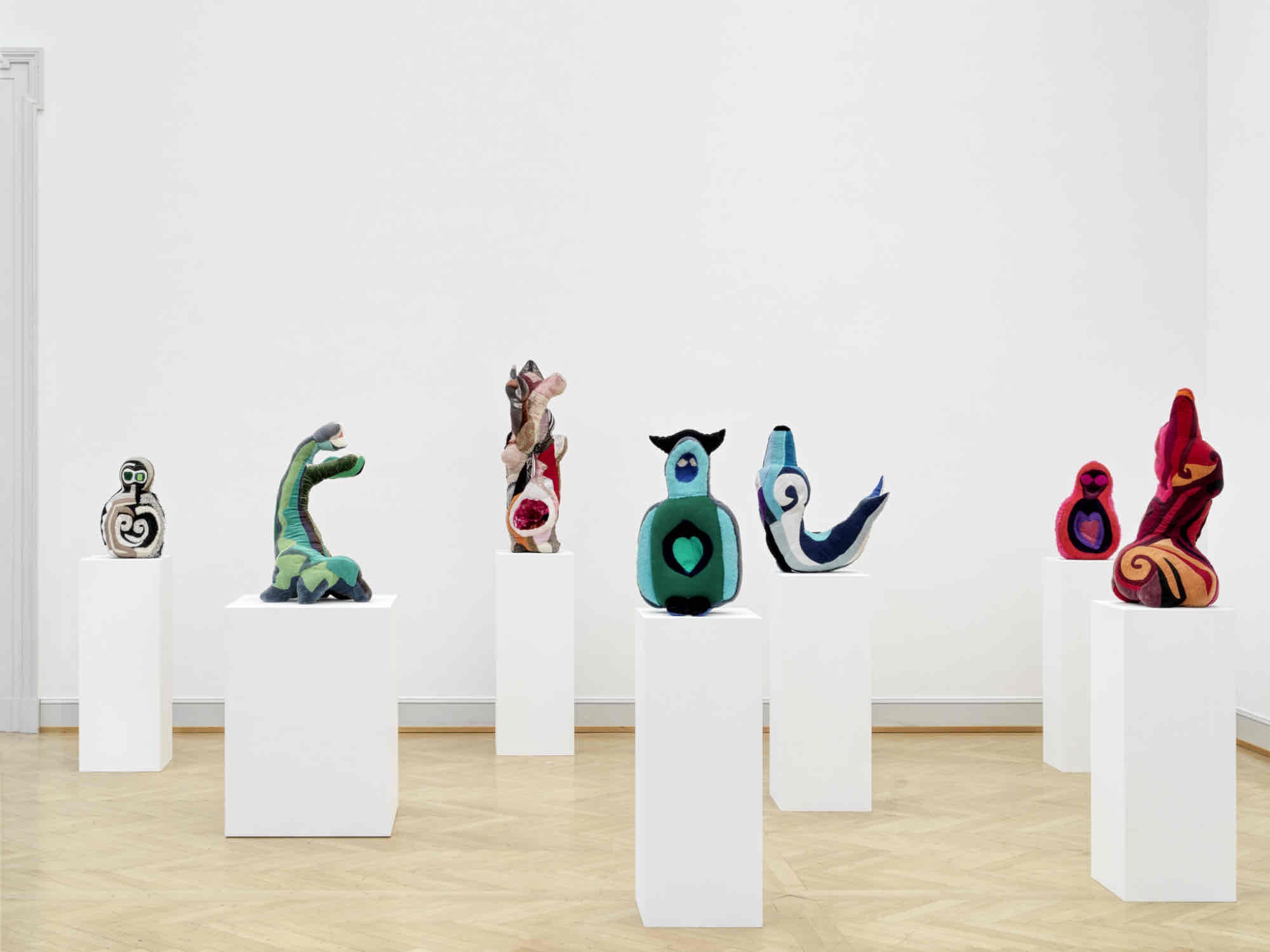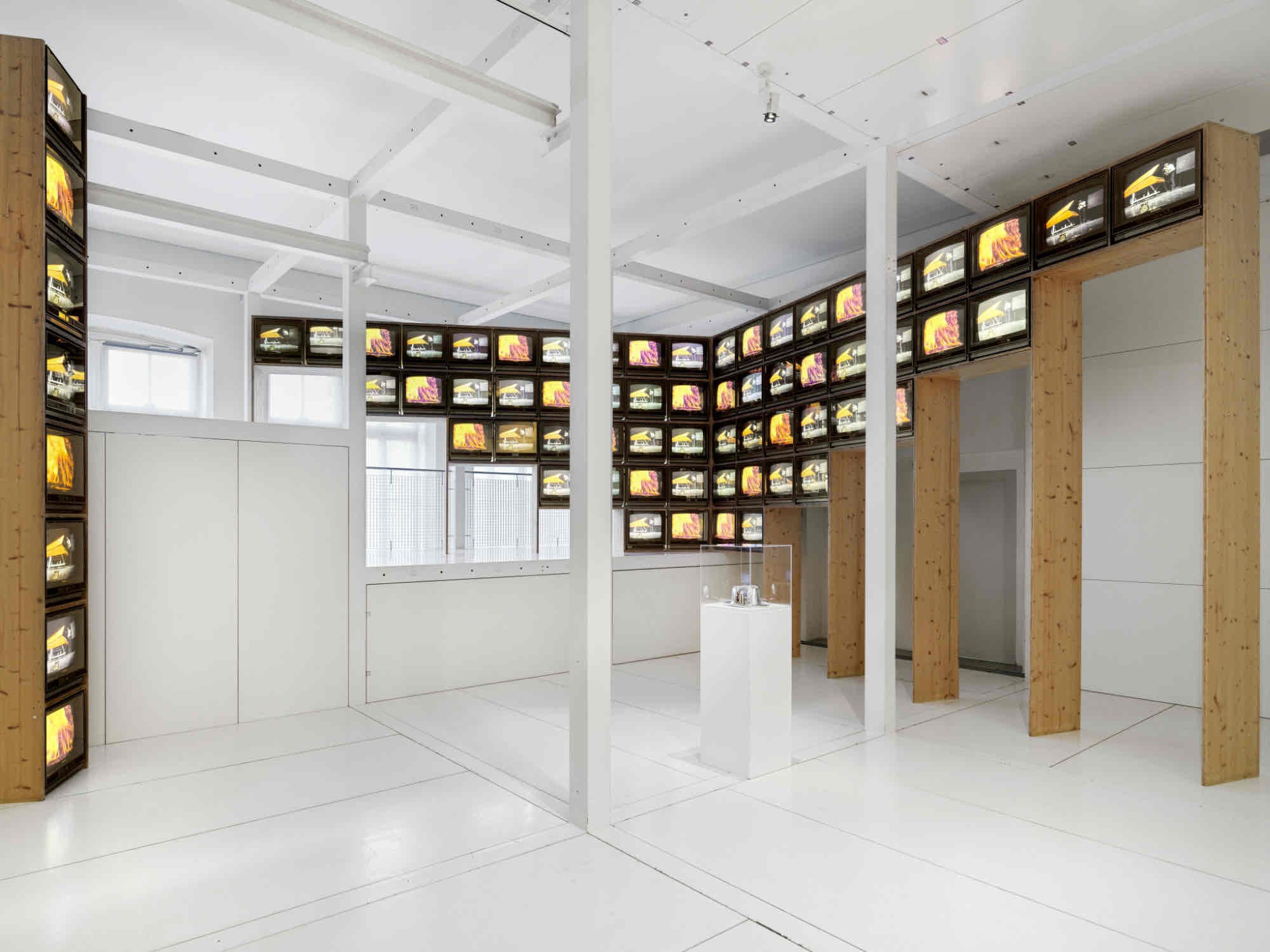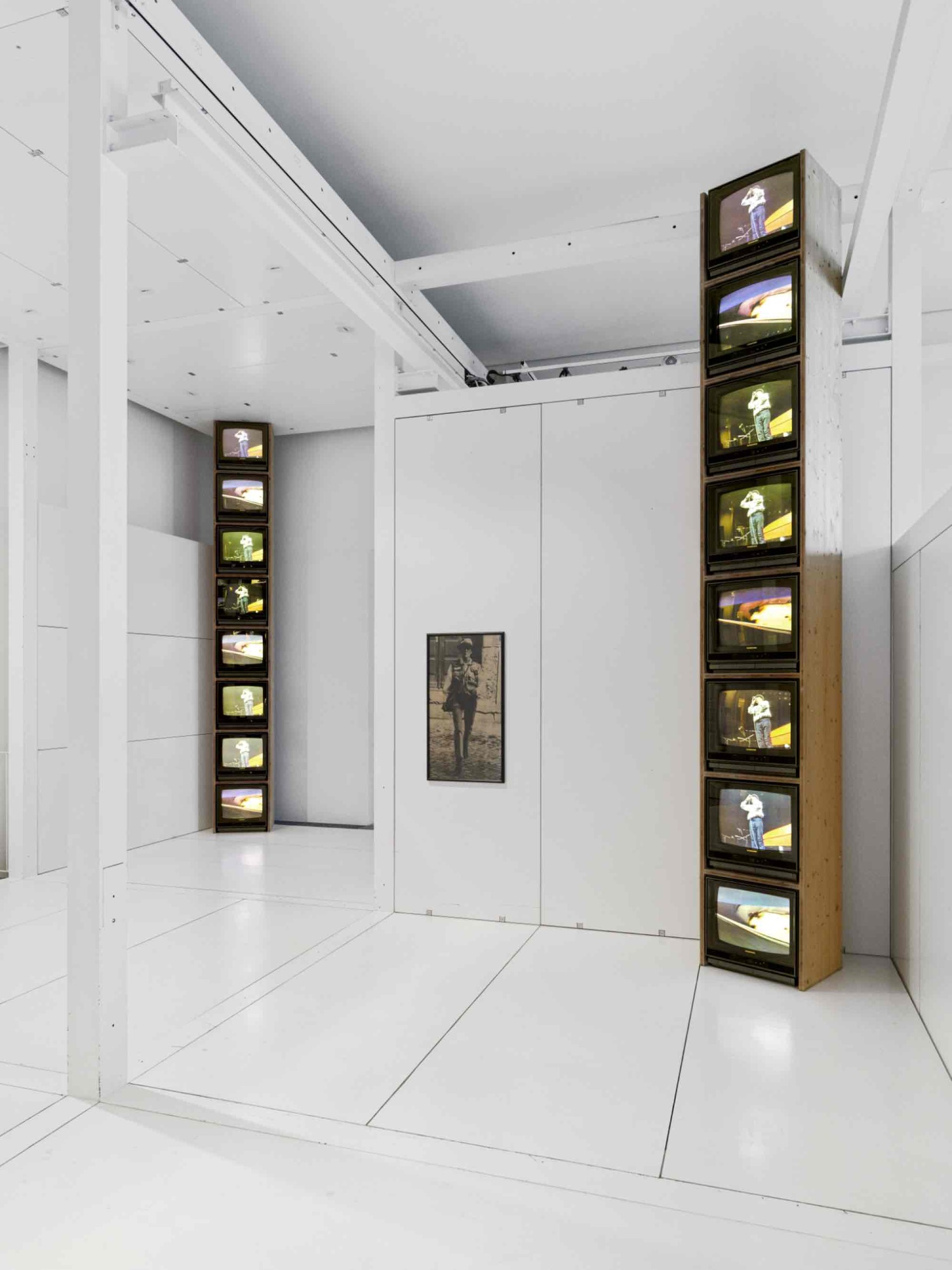Unexpected Encounters
New Perspectives on the Collection
25 Feb - 05 Nov 2023

Unexpected Encounters, New Perspectives on the Collection, installation view, Kunstmuseum St. Gallen, Photo: Stefan Altenburger

Unexpected Encounters, New Perspectives on the Collection, installation view, Kunstmuseum St. Gallen, Photo: Stefan Altenburger

Unexpected Encounters, New Perspectives on the Collection, installation view, Kunstmuseum St. Gallen, Photo: Stefan Altenburger

Unexpected Encounters, New Perspectives on the Collection, installation view, Kunstmuseum St. Gallen, Photo: Stefan Altenburger

Unexpected Encounters, New Perspectives on the Collection, installation view, Kunstmuseum St. Gallen, Photo: Stefan Altenburger

Unexpected Encounters, New Perspectives on the Collection, installation view, Kunstmuseum St. Gallen, Photo: Stefan Altenburger
Artists: Marion Baruch, Martha Cunz, Per Kirkeby, Sherrie Levine, Johanna Nissen-Grosser, Uriel Orlow, Nam June Paik, Richard Serra, Sturtevant
Curated by Gianni Jetzer and Melanie Bühler
There are more than 10,000 objects in the collection of the Kunstmuseum St. Gallen. These objects have grown with the museum and reflect the interests and focal points of its program. Like most museums in Switzerland, this program has been oriented towards a male-dominated art history. To this day, works by women artists remain underrepresented in the museum's collection. Unexpected Encounters: New Perspectives on the Collection establishes a new direction.
The collection presentation, expanded through the inclusion of loaned work, focuses on female perspectives, and breaks with a conventional reading of key positions in the collection. Works by Richard Serra, Martha Cunz, Per Kirkeby, Johanna Nissen-Grosser, and Nam June Paik, are given a new twist through the inclusion of artworks by Marion Baruch, Uriel Orlow, Sherrie Levine, and Sturtevant.
Richard Serra has long been considered a heavyweight, not only in terms of his place in art history but in the sculptures themselves, which literally weigh tons. Marion Baruch, on the other hand, is likely known to only a few. Like many female artists, she was only "discovered" by the art world at an old age. In the first room of the exhibition exploring "Dematerialization", sculptures by Serra and Baruch — similar in form, though different in language — are brought into a conversation.
Serra's Minimalist sculptures make an impression through their pure material and massive presence. Critics have, however, also identified Minimalist art as patriarchal posturing: a demonstration of male and white privilege. Marion Baruch's works are the exact opposite of this Minimalist mode of address. The draped fabric scrap, cut-out silhouettes collected from the ready-to-wear industry, are fragile, light, floating. Baruch’s sculptures made of fabric remnants speak the language of Post-Minimalism: an approach to industrial material that refers to the artists' own physicality and are more personal than works of Minimalism.
Thematic overlaps between modern and contemporary work are explored in "Alpine Ecology." Here, Martha Cunz’s paintings from the collection are juxtaposed with an installation by Uriel Orlow. For “New Nature” works by Johanna Nissen-Grosser and Per Kirkeby are brought together to highlight their shared interests in figuration, landscape, and nature. In the last gallery, the Kunstmuseum presents Nam June Paik's newly restored and spectacular 76-channel video installation, “Beuys/Voice - A Hole in the Hat, 1987/1990”. The work, a version of which was first shown at documenta 8 in 1987, is placed here alongside works by Sturtevant, as well as Sherrie Levine, both of whom, like Paik, refer to the artist-figure Joseph Beuys.
Curated by Gianni Jetzer and Melanie Bühler
There are more than 10,000 objects in the collection of the Kunstmuseum St. Gallen. These objects have grown with the museum and reflect the interests and focal points of its program. Like most museums in Switzerland, this program has been oriented towards a male-dominated art history. To this day, works by women artists remain underrepresented in the museum's collection. Unexpected Encounters: New Perspectives on the Collection establishes a new direction.
The collection presentation, expanded through the inclusion of loaned work, focuses on female perspectives, and breaks with a conventional reading of key positions in the collection. Works by Richard Serra, Martha Cunz, Per Kirkeby, Johanna Nissen-Grosser, and Nam June Paik, are given a new twist through the inclusion of artworks by Marion Baruch, Uriel Orlow, Sherrie Levine, and Sturtevant.
Richard Serra has long been considered a heavyweight, not only in terms of his place in art history but in the sculptures themselves, which literally weigh tons. Marion Baruch, on the other hand, is likely known to only a few. Like many female artists, she was only "discovered" by the art world at an old age. In the first room of the exhibition exploring "Dematerialization", sculptures by Serra and Baruch — similar in form, though different in language — are brought into a conversation.
Serra's Minimalist sculptures make an impression through their pure material and massive presence. Critics have, however, also identified Minimalist art as patriarchal posturing: a demonstration of male and white privilege. Marion Baruch's works are the exact opposite of this Minimalist mode of address. The draped fabric scrap, cut-out silhouettes collected from the ready-to-wear industry, are fragile, light, floating. Baruch’s sculptures made of fabric remnants speak the language of Post-Minimalism: an approach to industrial material that refers to the artists' own physicality and are more personal than works of Minimalism.
Thematic overlaps between modern and contemporary work are explored in "Alpine Ecology." Here, Martha Cunz’s paintings from the collection are juxtaposed with an installation by Uriel Orlow. For “New Nature” works by Johanna Nissen-Grosser and Per Kirkeby are brought together to highlight their shared interests in figuration, landscape, and nature. In the last gallery, the Kunstmuseum presents Nam June Paik's newly restored and spectacular 76-channel video installation, “Beuys/Voice - A Hole in the Hat, 1987/1990”. The work, a version of which was first shown at documenta 8 in 1987, is placed here alongside works by Sturtevant, as well as Sherrie Levine, both of whom, like Paik, refer to the artist-figure Joseph Beuys.
